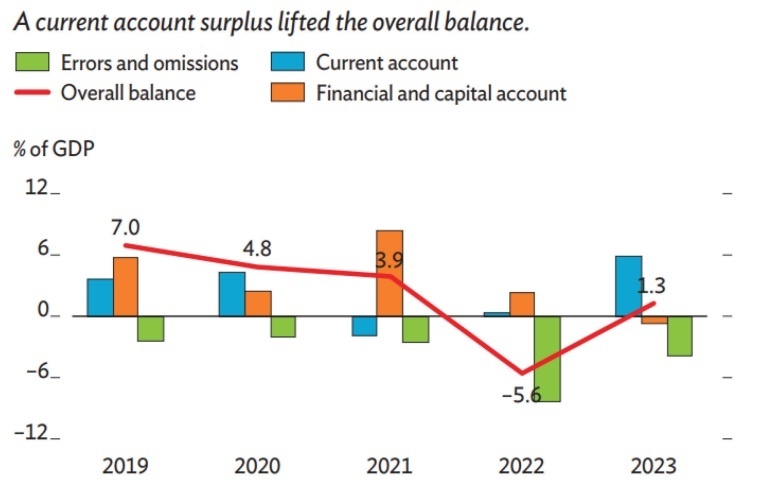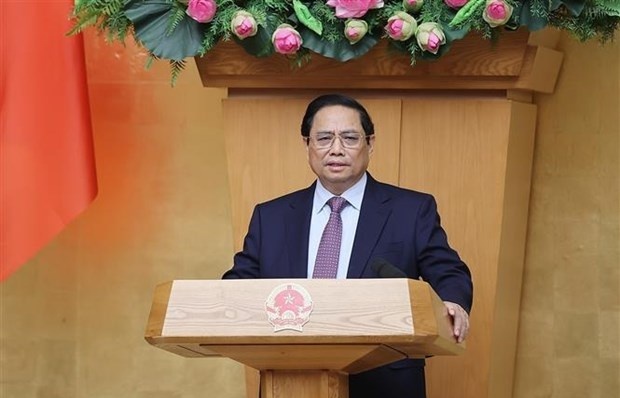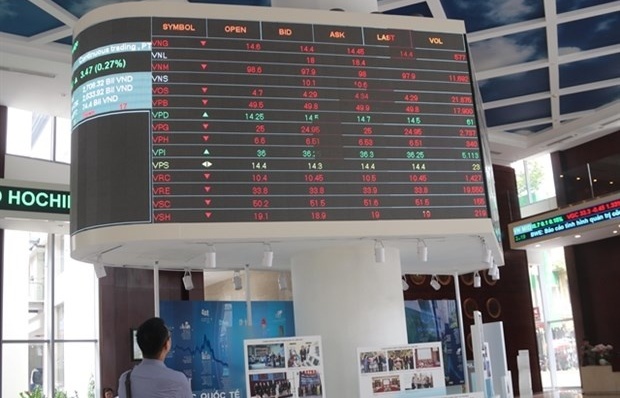Bond market to champion growth
 Investment guru Christian Kamm, president of Kamm Investments, explores the importance of the development of a formal bond market as a key to economic stability and consistent growth.
Investment guru Christian Kamm, president of Kamm Investments, explores the importance of the development of a formal bond market as a key to economic stability and consistent growth.
Investors in Vietnam really have much to be happy about. Vietnamese equities collectively outperformed all major equity markets in the first quarter of 2012 and have only experienced what most consider to be healthy technical correction in the second quarter of 2012, signaling an improving economic environment. Interest rates and inflation have moderated, the trade deficit appears under control and the dong has met only minor depreciation in the open market. Of course, such good news always comes with a price - economic activity has moderated and growth in gross domestic product (GDP) will be restricted this year.
Economic activity, in developing economies, is very difficult to predict and control. Commonly, developing economies suffer from a disproportional share of inexpensive exports, expensive imports and vulnerability to external shocks such as an European recession or currency crisis or a slowing world GDP. Even if domestic aggregate demand remains high - in these economies it is often a challenge for policy-makers to adjust the monetary and fiscal policies to compensate for an external aggregate demand decline.
This appears to be one of the economy’s challenges and what stock markets in Vietnam are currently facing. It is unclear of the extent of the European crisis and the result on such exporting countries as China, Brazil, and of course, Vietnam. We can be sure there will be some adverse effects. But whether these adverse effects are lasting will be determined by the pro-activeness and actions of the policy-makers to address the need for temporary relief and stimulus to the economy.
In 2009 after the debt crisis in the United States became acute, many developing countries adopted loose monetary policies aimed at stimulating their economies and keeping them out of recession. Vietnam instituted measures to promote growth including extraordinary lending practices to businesses to ensure production and manufacturing capability. The short-term result was escaping recession, the medium term result was inflation. Policy-makers in Vietnam, I am sure, are aware of the costs of stimulating the economy, which resulted in where we are now, in a period of restricted credit growth and an anemic growth outlook.
The question remains: how to stimulate an economy out of recession when affected by external shocks without resulting in inflation? The long-term answer is to create substantial and consistent internal domestic aggregate demand. In fact, a simple way to look at developed countries is their ability to sustain domestic aggregate demand. Eventually, Vietnam will reach this level and be considered a developed economy, but that is some time in the future.
In the short-term, the answer is not so easy or simple. A combination of effective monetary and fiscal policy stimulus can result in adequate growth. In the case of Vietnam, it is important policy-makers recognise the need to develop industries “up the supply chain”, meaning promoting industries such as those relying on technology which have a higher “value-added” than textiles, agricultural products and footwear which represent basic manufacturing. Stimulus should be made to promote foreign direct and indirect investment through tax code revision.
Taxes are an impediment to business growth and should be reduced or eliminated in these times. Tax code revision can also result in the elimination of bureaucratic issues foreign direct and indirect investors currently face. Restricting credit growth of commercial banks can only truly be accomplished when full recognition of NPLs (non-performing loans) takes place. Therefore, the commercial banking system must be “purified” and thereby made more efficient.
In the medium-term, though, a tremendous opportunity exists for Vietnam. Commitments to fully develop a bond market by 2020 are simply not soon enough. Although the country has three stock markets, a formal corporate debt market has yet to be promoted effectively. It is a vital component of any economy. Certain prestigious firms have found ways to access international credit, but at the cost of equity dilution through convertible bond issuance.
In most economies, firms can utilise capital borrowed from financial institutions, raised through equity offerings in the stock market, or through the issuance of debt. It is these three ways that keep capital costs competitive for businesses which seek to grow. Debt markets in most countries far exceed the size of the stock market. Therefore, we can assume that corporate growth and vitality is somewhat dependent on debt growth.
It is possible that policy-makers have been reluctant to promote the creation of a formal debt market because it could limit their control over credit and banking growth and thereby interest rates. It also poses a problem concerning the stability of the dong. Regardless of these issues, the development of a formal credit market can provide many advantages to the capital markets and economy in Vietnam. First, foreign indirect and direct investors will applaud any attempt of the government to promote a formal debt market, as another viable alternative to equity investing. This will likely attract more foreign capital into Vietnam over the medium term.
Second, it will provide another avenue for businesses to seek capital to grow. Currently, businesses have been largely unable to borrow due to credit growth restrictions which have thereby severely hampered business growth. Developed credit markets allow for businesses to create debt securities with suitably long durations to prevent against short-term credit and economic shocks resulting in wildly fluctuating interest rates and reduces tight supervision caused by borrowing from banks. Third, a more formal corporate credit market will promote a more stable and sizeable sovereign debt market. As investors continue to embrace corporate bond opportunities, they will seek diversification in Vietnam sovereign debt more avidly.
A formally developed debt market, in short, insulates business, to some degree, against credit and interest rate shocks which otherwise could cripple economic growth. The government can attempt to provide a more stable interest rate and inflation environment through consistent economic stability. This would ensure that corporate bonds issued for a long duration will not be worthless when redeemed and would not require firms to provide convertibility to equity.
As the Asian Development Bank indicated, Vietnam has experienced the fastest growth in a debt market in the region, exceeding 16.5 per cent in 2011 over 2010 levels. 2012 appears to be robust as well with the Vietnam Bond Market Association assigned market maker status to eight banks at the beginning of the year which will boost liquidity and volume.
The government’s issuance of Decree 90 in 2011 will provide long-term stability to the bond market as it develops, especially in ensuring creditworthiness in the international arena. Banks such as Vietcombank have recently sought to issue long-term corporate bonds internationally, partially to mobilise foreign currency capital. These are progressive signs.
But, Vietnam must maintain this momentum as a means of maintaining economic growth and stability in times of economic uncertainty and the government must promote the further issuance of corporate bonds to promote the development of a formal bond market.
What the stars mean:
★ Poor ★ ★ Promising ★★★ Good ★★★★ Very good ★★★★★ Exceptional
 Tag:
Tag:
Related Contents
Latest News
More News
- Solutions for enhancing provision of the stock market (April 23, 2024 | 10:38)
- MB aiming for 30 million customers by end of year (April 22, 2024 | 17:43)
- MB finalises strategy for acquisition of distressed bank (April 22, 2024 | 16:33)
- Vietnam central bank postpones gold bar auction (April 22, 2024 | 15:27)
- Benefits of pension funds must be incentivised (April 22, 2024 | 15:00)
- KRX trading system to begin official operation (April 22, 2024 | 14:09)
- Voluntary pensions to rejuvenate the sector (April 22, 2024 | 14:00)
- Gold market reforms paramount to stability (April 22, 2024 | 10:18)
- Loopholes continue to play part in rising NPL ratios (April 22, 2024 | 10:13)
- Techcombank scoops two Stevie Awards (April 19, 2024 | 18:35)



















 Mobile Version
Mobile Version